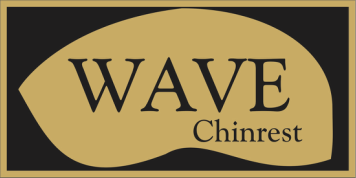Holding vs MovingA Razor's Edge-
What is it, and how does it define our issues as violin and viola players? And how can we find this razor's edge, use it to work for us and not have to fight our bodies? All musical instruments have to be supported by physical means; being held by the player or resting on the floor. In addition, the player must move parts of their body in order to play their instrument. So, we have a holding and moving construction and both must happen simultaneously. Or, if we wish, a co-existence of stability and mobility. For most instruments, those two functions are separate; some, such as piano and tympani, gain stability by resting on the floor; others, such as trumpet and oboe, are held in the player's hands, and still others, such as 'cello, use a combination of floor and body to provide support. In these cases, the stability components are separated from the mobility components- the pianist's and tympanist's bodies are free to move, the wind and brass player's diaphragms, mouths, and fingers are unimpeded and the cellists have wonderful freedom in their upper bodies. In other words, the holding and moving (or stability and mobility) are done by different body parts. Violin and viola are, to me, absolutely unique instruments, in that their holding and moving requirements are performed by the same body structures. We provide a shelf on the shoulders to balance them on, and then we use those same shoulders to move the arms to play. Arm motion originates not where the arms come out of the torso, but deep in the bones of the shoulder girdle and with the muscles in the back and shoulders, so we must have freedom of motion with these- just the same body parts that we use to hold the instrument. And here is a major issue for us- the same parts have to hold and move at the same time. When faced with this dual-use conundrum, many players sacrifice freedom of motion for the surety that comes from grasping tightly onto the instrument. I'll ask clients and students: what is the basic skill involved in violin playing? Usually the answers are along the lines of: straight bow, straight left hand, etc. I differ with them, stating that the basic skill in playing is to not drop the instrument. For the violin, this is actually very true- many players struggle to hold the instrument, and have little resources available for anything else. Finding the correct body point for accommodating the instrument's weight involves a deep understanding of how the body works, and locating the exact point where motion and security can both occur. There exists a fine line between allowing for both of these and sacrificing one for the other- it is, indeed- a Razor's Edge. How do we find this zone, this area in which both stability and mobility can co-exist? It is indeed there, and it is possible to find it. Ease and comfort, and naturalness of playing, is truly attainable for most anyone. But- it involves the courage to re-examine what we do on the instrument, and to truly understand how the instrument can interface with our body. I would love to discuss these issues with you, and am happy to do phone, email, and videochat support. Let me know at [email protected], or call at 615.516.0316. I do look forward to helping you and offer my best wishes for your playing comfort. Randall Olson
0 Comments
|
|
About WAVE Chinrest
We bring the finest in chinrests and player support. Get in touch- we'd be happy to help you. Offices and workshop 1104 E. 15th Ave. Bowling Green, KY 42104 US |
|
Proudly powered by Weebly
Copyright 2024 Randall Olson WAVE Chinrest

 RSS Feed
RSS Feed